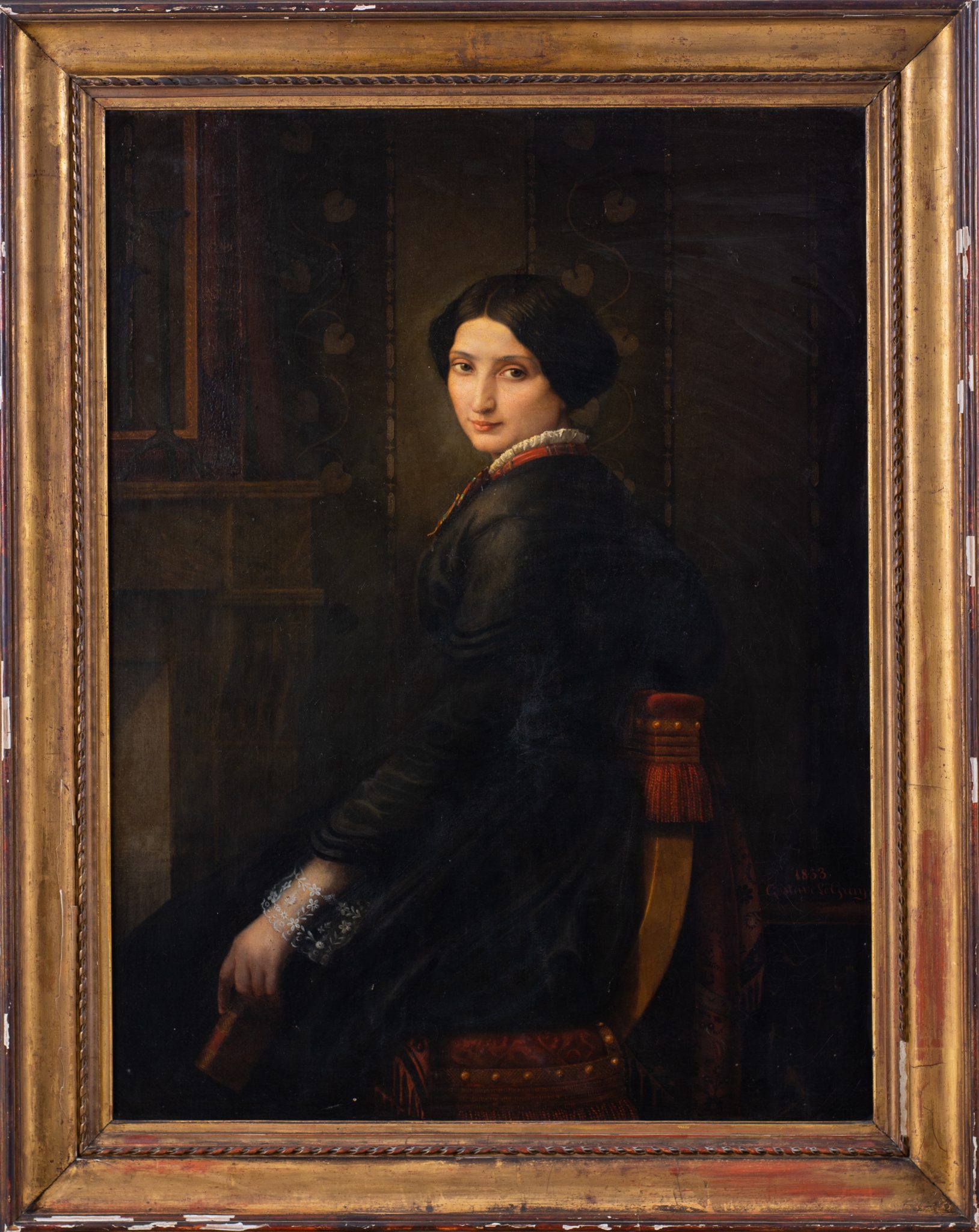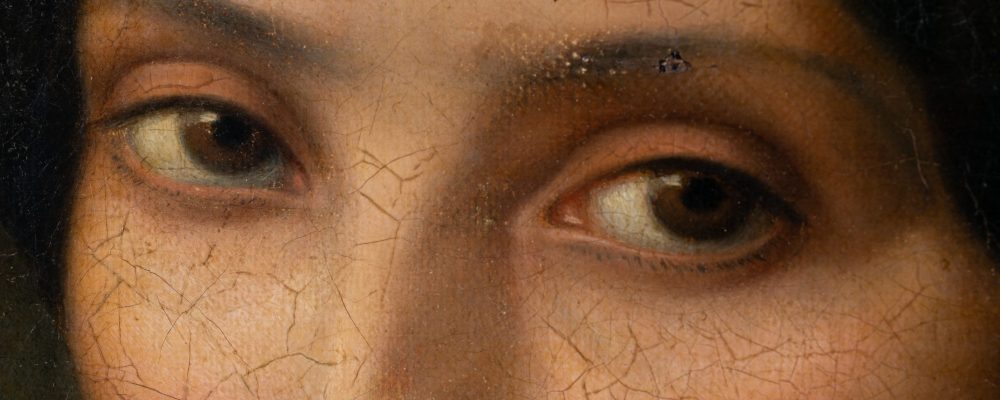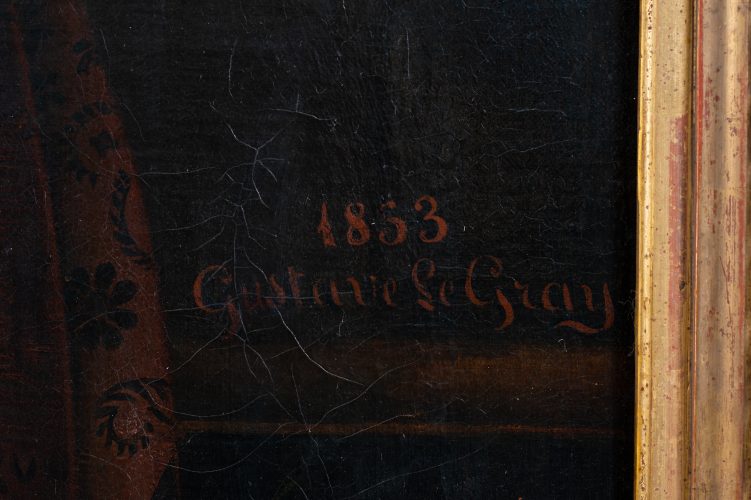
Gustave Le Gray (1820 – 1884)
Portrait of Madame GL
Oil on canvas. Signed lower right and dated 1853.
Height: 125cm, Width: 95cm.
Sold at auction
November 17, 2022
68,000 euros
It is the real and thrilling life that opinion now demands of art: the daguerreotype and photography opened the way
Claude Vignon, Salon of 1853
If you wish to view the auction page in english you will need to connect via a VPN (Virtual Private Network) and choose an english speaking country.
Jean Baptiste Gustave Le Gray was born in 1820 in Villiers-le-Bel (department of Val d'Oise, France), the only son of parents from the petty bourgeoisie. If it is through the photographic medium and the technical improvements that he brought to it that Gustave Le Gray became famous, he nevertheless remains a " painter by training and vocation[1] ". After turning his back on his father's wishes to see him become a notary, Gustave Le Gray in 1842 became a pupil of Paul Delaroche (1797 – 1856), professor at the École des Beaux-Arts in Paris, himself trained among others in the studio of Antoine Jean Gros (1771 – 1835) and Jacques Louis David (1748 – 1825). He left for Italy in 1843, and arrived in Rome in 1844, the year in which he married Palmira Maddalena Gertrude Leonardi in the church of San Giacomo in Augusta. The couple had six children, of whom only one, Romain, survived into adulthood, and lived in Paris from 1847 to 1860. In 1860, Gustave Le Gray left France for Palermo, in the company of Alexandre Dumas, then traveled to Catania, Malta, Alexandria, Beirut, Damascus, before settling in Cairo, where he died in 1884.

The painted work of Gustave Le Gray remains to this day relatively confidential, and few canvases have come down to us. In 2002, in the book written on the occasion of the artist's monographic exhibition, Sylvie Aubenas, Chief Curator in the Department of Prints and Photography at the National Library of France, still pointed out that on this date, no painting had been identified[2].
Gustave Le Gray, alongside his activity as a photographer, never stopped painting all his life, in Paris or in the East. Portraits or Orientalist scenes remain his favorite subject. As he realizes the Portrait of Madame GL at the age of 33, it was at the age of 49 that he executed, on the order of the Pasha of Egypt, that of the Empress Eugénie. It's under the title Portrait of Madame GL that our oil on canvas was presented at the Salon des Artistes Vivants in 1853, the year when among some 1200 works[3] selected by the jury are presented the famous Tepidarium by Théodore Chassériau (1819 – 1856) the Battle of the Cimbri by François Joseph Heim (1787 – 1865) or the Daphnis and Chloe by Jean-Léon Gérôme (1824 – 1904). The same year, Gustave Le Gray also produced photographic views of the salon[4].

125 cm high and 95 cm wide, our oil on canvas represents a young woman in an interior.
Its title leaves no doubt as to the identity of the model. The initials "GL" can refer both to "Madame Gustave Legray" (Legray then being written in one piece) or to "Madame Gertrude Leonardi". Palmira Maddalena Gertrude Leonardi is undoubtedly the model for this portrait. Born on March 23, 1923 in Rome, she was then thirty years old.
Presentation at the 1853 Salon. Exhibited at the Salon in 1853 under the number "2794" and the name " Portrait of Mrs. GL », this oil on canvas is dated the same year above the signature (Fig.13). She remains in her original frame. Made of wood and gilded stucco, molded, grooved, and carved with a frieze, the greatest interest of this frame lies on its reverse. The top has indeed the registration of his directory number in the living room, inscribed in black pencil, to definitively confirm its history
[1] According to the words of Thomas Cazentre in: "The photographs of Gustave Le Gray", The Gallica Blog, article published on 1er January 2013.
[2] See Gustave Le Gray, 1820-1884. [Exhibition, Paris, National Library of France, March 19-June 16, 2002] / under the direction of Sylvie Aubenas, Paris, BNF – Gallimard, 2002, page 13: “ We know nothing of Le Gray's painting: no painting has been identified although he produced some all his life ".
[3] See: Claude Vignon, Salon of 1853, Dentu, Paris, 1853, page 54.
[4] Two views are currently known, both kept at the Musée d'Orsay under the inventory numbers PHO 2000 13 4 and PHO 2000 13 2.
